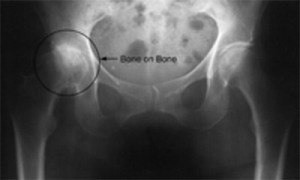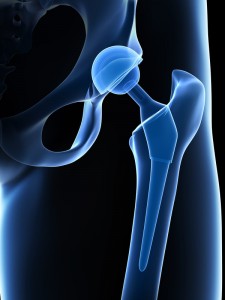by Sportsdoc Raj
If you’re a candidate for a total hip replacement, it’s highly likely that you’re experiencing not only pain and discomfort, but limited functionality as well. When many patients are confronted with the diagnosis of needing a total hip replacement surgery, it can seem overwhelming, especially when you consider your mobility and the pain that might  accompany the procedure. However, these surgeries are actually among those with the highest rates of success, giving you back your life.
accompany the procedure. However, these surgeries are actually among those with the highest rates of success, giving you back your life.
Steps of a Total Hip Replacement Surgery
When you’re confronted with the need for total hip replacement surgery, your first thought might be, what are the steps involved in a procedure such as this? Seven basic steps are involved in a hip replacement surgery, and are as follows:
1. Incision in the Hip – To get to the hip joint, your Beverly Hills Orthopedic surgeon will first make an incision over your hip joint, giving them access to the correct area.
2. Prepare the Hip Socket – Next, the head of your femur will be removed from your hip socket and removed from the femur itself, allowing for your Los Angeles orthopedic surgeon to prepare the hip socket for the cup that will hold your replaced hip.
3. Implantation of the Cup – The cup that will be inserted in your hip socket will be carefully position during implantation, which typically involves the use of bone cement or other substances that allow the bone to grow while still holding the cup in place.
4. Implantation of the Insert for Your Hip Socket – Once the cup is firmly in place, an insert will be snapped into the cup. Generally, this insert will be made from  durable plastic or ceramic.
durable plastic or ceramic.
5. Implantation of the Femoral Stem – Because your femur must be reattached to your hip socket, it will be cleared with various devices, resulting in the implantation of a prosthesis to allow it to be connected once again.
6. Inspect Hip Stability – At this point, your surgeon will inspect the femoral stem, ensuring that the joint is not only stable, but that it allows you a wide range of motion as well.
7. Finalization of Implants – This final stage involves the final placement of the ball onto the prosthesis in your femur bone. Of course, your wound will then be closed with stitches, staples, or both.
Understand Your Total Hip Replacement Surgery to Reduce Anxiety
Although it is expected that you will feel nervous for your surgery, you can put your mind at ease by knowing the general procedural framework of what’s to come. As a result, you will most likely regain your mobility and reduce discomfort, giving you the ability to do everything that you’ve always wanted throughout the remainder of your life.

